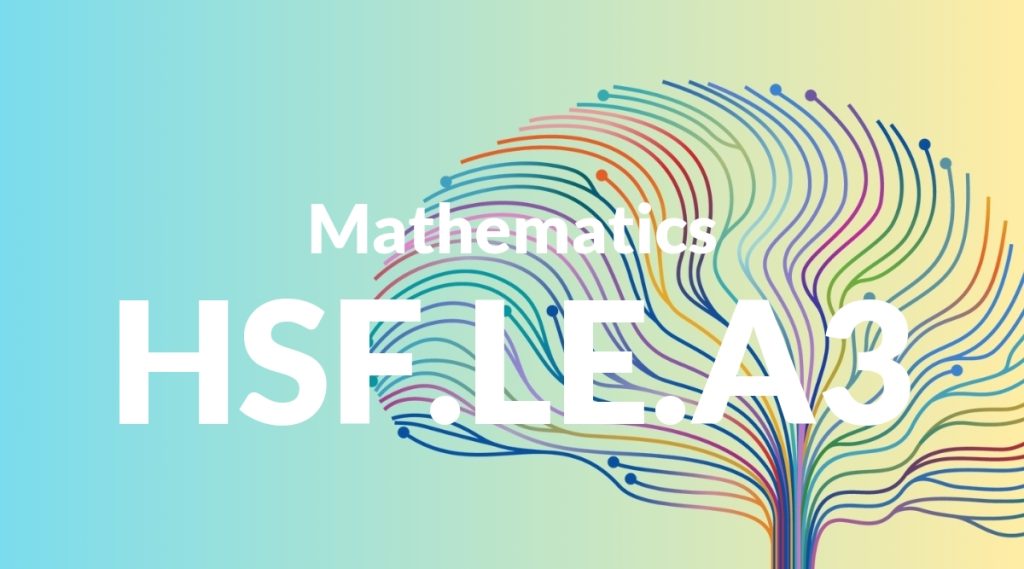Standard: HSF.LE.A3 – Observe using graphs and tables that a quantity increasing exponentially eventually exceeds a quantity increasing linearly, quadratically, or (more generally) as a polynomial function.
Grade level: High School: Functions
Subject: Mathematics
Domain: Linear, Quadratic, & Exponential Models
Teacher Overview
This standard focuses on understanding the differences in growth rates between exponential and polynomial functions, including linear and quadratic functions. It is crucial for students to recognize how different types of functions behave over time, as this knowledge is foundational for advanced mathematical concepts and real-world problem-solving. Students need to be familiar with graphing linear, quadratic, and exponential functions, as well as interpreting their behavior. They should also understand basic polynomial functions and their properties.
After mastering this standard, students will be able to analyze more complex functions and models, including logarithmic and rational functions. They will also be better prepared to tackle real-world problems involving multiple types of growth and decay processes.
Common Misconception 1
Some students may think that linear growth can eventually surpass exponential growth. This misconception arises from a misunderstanding of the nature of exponential growth, which increases at a rate proportional to its current value, leading to much faster growth over time.
Intervention 1
To address this misconception, use graphical representations and real-world examples, such as comparing the growth of a savings account with compound interest to one with simple interest, to illustrate how exponential growth quickly outpaces linear growth.
Common Misconception 2
Another common misconception is that quadratic growth is faster than exponential growth for all values. This misunderstanding may come from the initial appearance of quadratic functions, which can grow rapidly at first but eventually are outpaced by exponential functions.
Intervention 2
Provide students with tables and graphs that compare quadratic and exponential functions, pointing out the specific points where exponential growth surpasses quadratic growth. Use real-world scenarios, like comparing the spread of a virus (exponential) to the growth of a tree (quadratic), to make the concept more tangible.
Prerequisite Knowledge
Students should have a foundational understanding of linear, quadratic, and exponential functions, including how to graph these functions and interpret their behavior. Additionally, students should be familiar with basic polynomial functions and their properties.
Subsequent Knowledge
After mastering this standard, students will be able to analyze more complex functions and models, including logarithmic and rational functions. They will also be better prepared to tackle real-world problems involving multiple types of growth and decay processes.
Instructional Activities
- Graphing and comparing linear, quadratic, and exponential functions
- Analyzing real-world scenarios involving different types of growth
- Using tables to track and compare the growth of different functions over time
- Class discussions on the implications of different growth rates in various contexts




